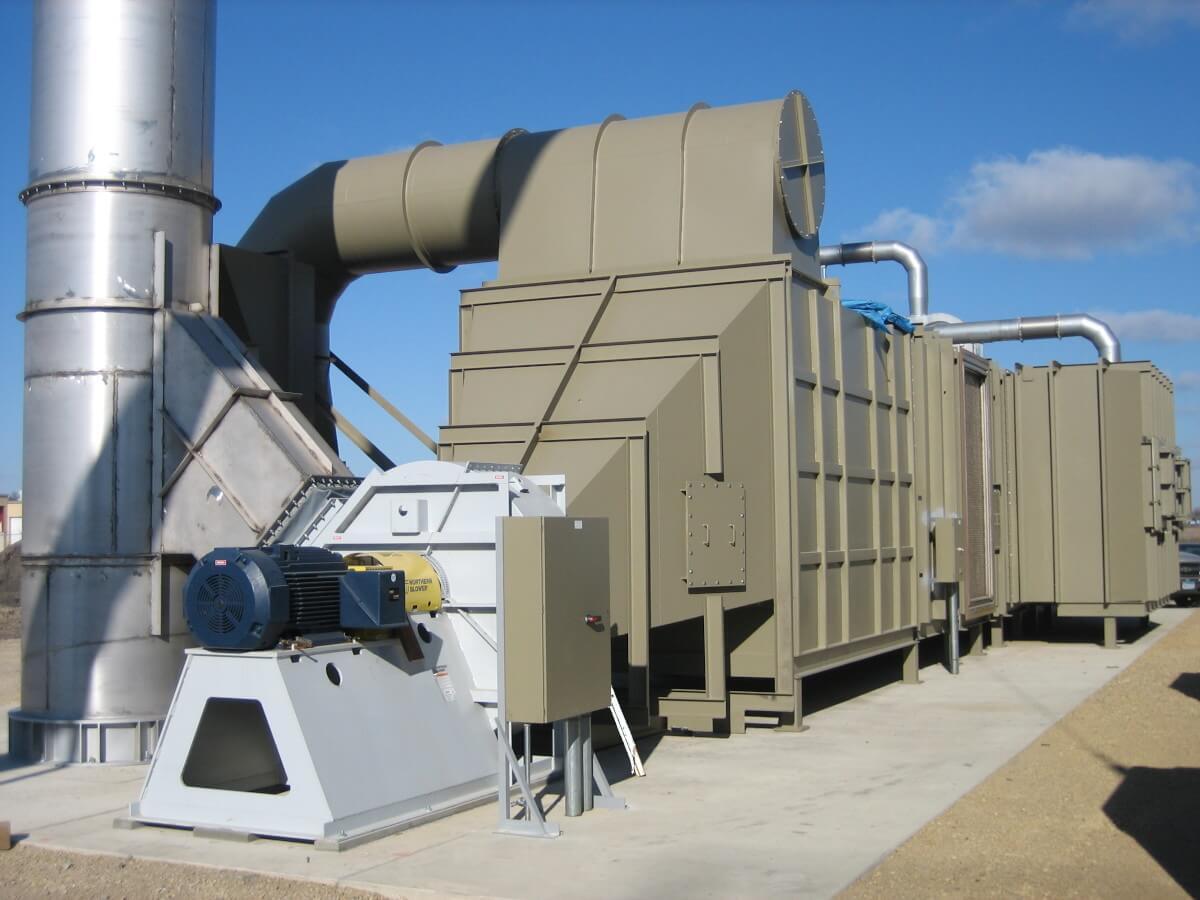High Efficiency Thermal Oxidizer Abates Odor For Feed Manufacturer
- Pollutant: Emissions with Undesirable Odors
- Industry: Food Processing & Manufacturing
- System: Thermal Oxidizers
In order to reduce odors and operating costs, an animal feed manufacturer installed a Recuperative Thermal Oxidizer on their newly increased production line.

Initial Operating Issue
An animal feed researcher and producer increased their capacity at their Midwest facility, thus requiring air pollution control technology that addressed their animal supplements production process. Pollution Systems stepped in to provide equipment that would effectively reduce odors in 40,000 SCFM of VOC laden process air. Additional objectives expressed by the manufacturer included long-term reliability and reduced operating costs (notably reduced energy consumption).
Proposed Solution and How the Technology Works
The system selected was a High-Efficiency Recuperative Thermal Oxidizer with a secondary 75% Heat Exchanger.
The secondary heat exchanger was used to reduce the ongoing operating cost; the recovered energy that this yielded was to preheat air for the manufacturing drying process, meaning less external energy was needed. Other oxidizer technologies, such as catalytic and regenerative, were not appropriate for this application due to the potential for particulates in the air stream. Additional energy-saving features were integrated into the system to accomplish this objective, including proportioning air to fuel valves on the gas train and high-efficiency fans with variable frequency drives.
Results
Overall, the system reduced fuel consumption by more than 50% (compared to a typical Thermal Recuperative Oxidizer of the same size), and odor emissions were minimized.
Related Case Studies
Catalytic Oxidizer Offers Odor Control for Home Product Manufacturer
A scented home product manufacturer had to proactively solve nuisance odors from their process by using a Catalytic Oxidizer to abate the smells that were bothering the local community.
- Pollutant: Emissions with Undesirable Odors
- Industry: General Manufacturing
- System: Catalytic Oxidizers
Recuperative Thermal Oxidizer Reduces Fuel Costs for LFG Facility
An LFG facility receives significant energy savings by using a recuperative thermal oxidizer to destroy VOCs in their process stream. This solution incorporated two heat exchangers for additional energy saving benefits.
- Pollutant: Volatile Organic Compounds (VOCs)
- Industry: Recovery & Recycling
- System: Thermal Oxidizers

